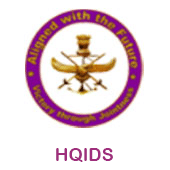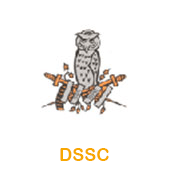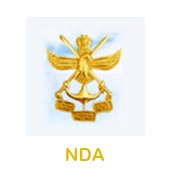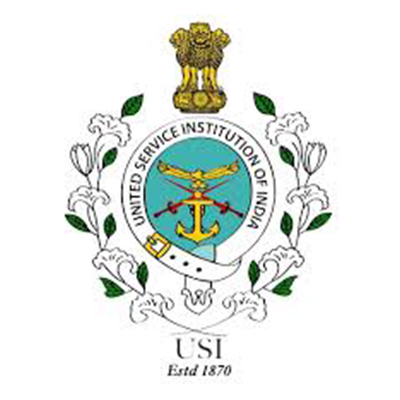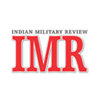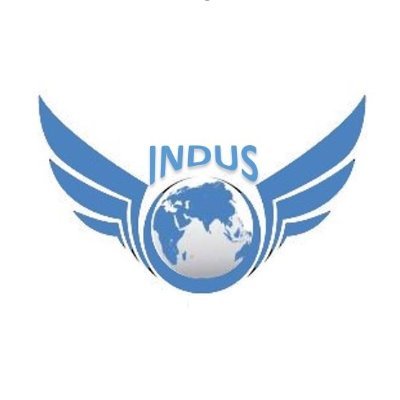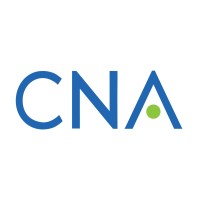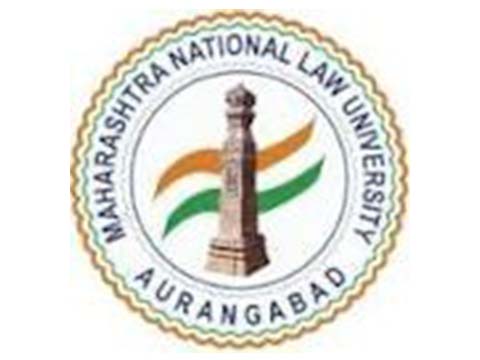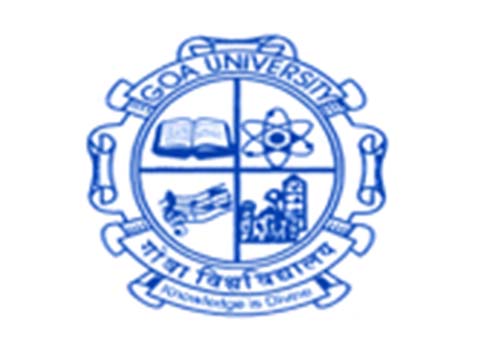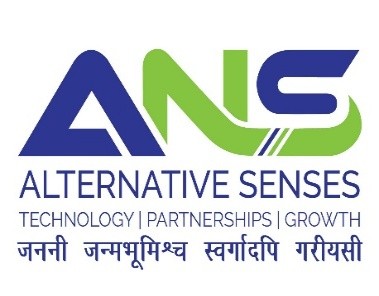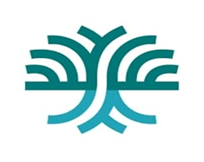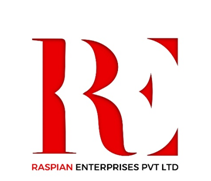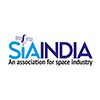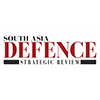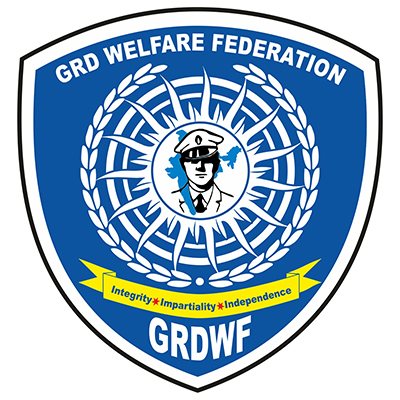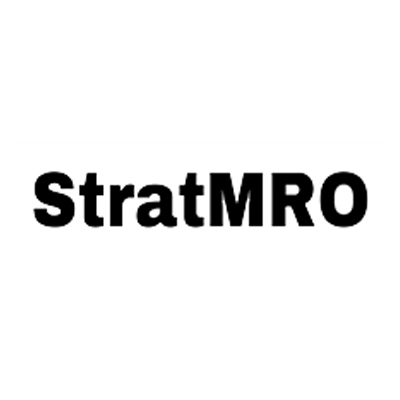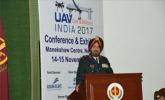
Seminar | 20-Mar-2018
Seminar | 14-15 Nov 2017
UAV India 14-15 Nov 2017
1. Centre for Joint Warfare Studies and Indian Military Review jointly conducted a seminar on “UAV Civil & Military India 2017” on 14-15 Nov 2017 at Manekshaw Centre, Delhi Cantt. The military uses of the UAVs were discussed on 14 Nov 2017 whereas, the civil uses were deliberated on 15 Nov 2017.
MILITARY USES OF THE UAV: DAY -1 (14 NOV 2017)
INAUGURAL SESSION
2. Welcome Address. The proceedings commenced with the Welcome Address of Lt Gen Vinod Bhatia, PVSM, AVSM, SM (Retd), Director, CENJOWS. In his address, the Director, CENJOWS welcomed all the delegates in the seminar and hoped for two days of fruitful discussions which will enable to chart a way forward.
3. Key Note Address. Lt Gen PJS Pannu AVSM, VSM, Dy Chief of Integrated Defence Staff (DOT) HQ Integrated Defence Staff gave the Key Note address wherein, he stressed the following points :-
(a) UAVs can perform multifarious roles which are limited by imagination alone.
(b) There are air safety concerns in absence of any legislation or regulatory mechanism for UAVs.
(c) Constraints in their employment also relate to their design, test, and verification and validation methodology.
(d) There is a need for affordable UAV technologies.
(e) Need to address the privacy and liability issues.
4. The industry perspective of the UAV was given by Mr. Ravi Bhatnagar, Chairman Defence Committee, PHD chambers. Following points were stressed:-
(a) There is a considerable a growth in the mini UAVs segment. In long run, similar growth is expected in mid-sized UAVs.
(b) After China, US, Japan, India is the largest manufacturer of UAVs. In FDI partnership a CAGR growth of 18 % is possible in India.
(c) UAVs are useful in different types of security related roles. These can be employed by the security forces to track the insurgents and terrorists.
(d) There is a need for a proper framework to regulate their employment.
5. Inaugural Address. The Inaugural Address was delivered by Dr VK Saraswat, Member Niti Aayog & Chief Patron Defence Infrastructure and Planning Management Council (India). Dr. Saraswat carried out a detailed presentation on the uses of the UAVs both in civil and military realm. He apprised the audience that UAV industry is growing @ 7.7% CAGR. In this growth, Indian contribution is very small in R&D and in growth of the industry. The rate at which the use of UAVs is growing, he estimated that by 2020, UAVs and manned platforms will share 50% tasks each and by year 2030, he expects nearly 80% of the military roles will be performed by the UAVs. Even at this point, services need a substantial numbers of UAVs to perform various roles which presently are being performed by the manned platforms. As regards to the current needs of the Indian armed forces, he opined that Navy needs 60-100, IAF 300-500 whereas, the army requirements could be anywhere 1500-2000. He listed following future research areas in UAVs:-
(a) Smart UAVs with remote sensing payloads – Comprising autonomous detection, identification and tracking.
(b) Robotic payloads such as, modular and smart floating sensor nodes.
(c) Multi-vehicle networking.
(d) Fault tolerant, robust UAVs.
(e) Enabling ship-based UAV operations in remote and harsh conditions. This covers launch and recovery of fixed wing UAV from a moving ship and its integration with ship air surveillance system for better situational awareness.
SESSION – 2
EMERGING TECHNOLOGIES AND THE ROLES OF THE UAV’S.
6. The session was chaired by Lt Gen Rameshwar Yadav, PVSM, AVSM, VSM (Retd), former Director General Infantry, Army HQ. He initiated the proceedings by tracing the military history which was impacted by the advent of the new technologies. In that, he referred to the introduction of Gun, Tank and aircraft and their effect on military op. Same way, he opined that the new technologies like, artificial intelligence, Robotics and UAVs will change the character of the future wars.
7. After the chairman’s introductory talk, Col Paramvir Singh, rep from the Directorate of Infantry spoke on the UAV requirements for the infantry. He apprised the audience that apart from the conventional operations, Infantry is deployed on the LAC/ LC and also gets deeply involved in Low intensity conflict. Further, it also called in aid of the civil administration natural calamities/ disasters. Irrespective to the type of operation, the infantry seeks to know the intelligence/ information in realistic time frame to perform its roles. Hence, its requirements are generally centered on the ISR roles to detect/observe the adversary’s dispositions beyond the line of sights.
8. Col Paramvir Singh concluded his talk by alluding to the useful role of the UAVs in Uttrakhand disaster in year in year 2013. He spoke of the attributes of UAVs particularly in disaster management. These enable reaching out to the inaccessible areas, in areas where manned aircraft/vehicles cannot operate due to the safety reasons and in delivering succor to the affected populace. All classes of UAVs have applications in the disaster management. Mini UAV’s could perform the close range surveillance, whereas, medium altitude and high altitude UAVs can carry out operations in all weather conditions and over long ranges. The rotary wing UAVs could even carry under slung loads for the neediest.
9. The offerings of the Industry were discussed by Mr VS Srinivasan of the Tata advanced Systems, Ms Katrina Fisova from the Czech republic, Mr JS Gavankar and Mr Ehud IIany of the Adanai-Elbit Advanced systems, Mr Yogendra Jahagirdar of Jap Aero and Mr. Nihar Vartak of Austeria Aerospace.
10. Mr VS Srinivasan of Tata Advanced claimed that Tata Advanced systems has developed its own mini-UAV which meets the Infantry’s mini-UAV requirements The system has been indigenously designed and have sub-systems like autopilot, ground control station and gimbal stabilization. The system is capable of all terrain operations on 24/7 basis and has features like autonomous mission control and target tracking low noise and has rugged ground control station.
11. Ms Katrina Fisova from Czech Republic spoke on Engines and for UAVs and drones. The company has expertise in engine domain from 2kg to heavier weights. India generally lacks expertise in the engines. A joint partnership with transfer in technology could prove helpful in developing indigenous capability.
12. Mr JS Gavankar and EhudIIany from Elbit Advanced Systems, spoke on manufacture of the Hermes 900 MALE, a tactical UAV in India. This UAV is already in service with Israelis armed forces. The joint venture will carry out assembly, integration and testing of the UAVs at Mundra, Gujarat which has hangers and airfield other facilities already available for this purpose. The project when fructifies could meet both Indian Armed forces MALE tactical UAVs demand as well as manufactured for export.
13. Mr Yogendra Jahagirdar of “Jap Aero,” talked his company’s special offerings in the UAV field. His company has been engaged in production of target UAVs for testing guns and missiles of the Indian armed forces for three decades. His company holds world records for flying aero- models from Kanya kumari to Kashmir (3750km) as well as from Karachi to Dhaka (Pakistan –India and Bangladesh) in 1950.
14. The last Industry Speaker was Mr Nihar Vartak from “Asteria Aerospace”. His company’s expertise is in Micro and Mini UAVs segment. Their USP is in providing fast actionable intelligence which leads to a quicker response from the law enforcement agency/security forces. In his assessment, these UAVs could be particularly useful in border areas which due to the terrain limitations are not manned or sparsely manned.
SESSION -3
UAV CAPABILITIES AND REQUIREMENTS
15. Lt Gen Sanjay Kulkarni, PVSM, AVSM, SC, SM, VSM (Retd), former Director General Infantry Army HQ, chaired the third session. In introducing the subject, he shared his own experiences in operation of UAVs. Thereafter, the specific UAV requirements of the Air force, Army artillery and Navy were discussed by the individual service reps.
16. Air Cmde Sanjeev Raj PD, Offensive Ops, Air HQ informed the participants of the historical perspective in growth of UAVs and their employment philosophy in general. He informed that Indian Air Force is already using Israeli made Searcher and Heron UAVs. He however did not specifically cover IAF’s requirements for UAVs.
17. Col Sanjeev Bhardwaj, Director Artillary-11, Army HQ covered the Indian artillery requirements of the UAVs. He initiated his talk by covering various roles in which UAVs are employed, such as surveillance, to build up picture of en deployment, locate and engage strategic targets, post-strike damage assessment, battlefield management and disaster management. He brought out the specific UAV requirements for the artillery. As per him, Army artillery needs two categories of MALE UAVs for EO/IR, Elint, Commint, SAR roles. The first category should have an endurance of 25hr and should be controllable on LOS range up to 250 km as well through satellite up to 1000 km. In the second category, an endurance of 10hr and range 250km at LOS is needed. Both categories should have multi-payload capability.
18. Cmde AN Prasad PD, Aircraft Acquisition, Naval HQ spoke on the naval requirements of UAVs He informed the house that Navy needs MALE UAVs for coastal surveillance up 150nm from the coastline in all weather conditions. In all, Navy needs 37UAVs for this role. In HALE category, Navy needs UAV to carry out surveillance of the Choke points such as Gulf of Aden, Mozambique, and entrance to the Malacca strait.
19. The service speakers also brought out UAV’s shortcomings namely, restricted speeds, low payload carrying capacity, detectable to the surveillance radars, technological obsolescence, dependence on OEM on maintenance etc.
CLOSING SESSION: DAY 1
20. Valedictory Address. In the end of the proceedings of day-1, Air Mshl LK Malohtra, AVSM, VSM (Retd) gave the valedictory address wherein, he recounted some of the take aways from the seminar relating to employment, requirements, research and development and potential of UAVs. He also desired that future seminar on this subject could also have more content on employment of the UCAVs in Offensive roles.
21. Closing Remarks and Vote of Thanks. Lt Gen Vinod Bhatia, PVSM, AVSM, SM (Retd), Director, CENJOWS gave the closing remarks and also proposed a vote of thanks for the attendees, participants and sponsors of the seminar.
CIVIL USES OF UAV: DAY-2 (15 NOV 2017)
INAUGURAL SESSION
22. Welcome Address. The proceedings on day 2 commenced with the inaugural address by Shri Arvind K Arora, the Director General of, DIPM council (India). He initiated the deliberations with a comment that level of penetration of UAVs in civil is increasing with every passing day. The major reason for this is cost effectiveness of UAV’s and also that their operations are less risky than the manned aircraft.
23. Industry perspective. Mr MK Gupta the member of the defence committee of PHD chamber of commerce and industry gave the industry perspective of the UAVs. He enumerated the various roles in which UAVs are employed in civil. These have immense use in Earth sciences where these can give inputs on study of hurricanes and melting of snow. In home land security, these have potential for their use in coastal/border surveillance and in checking poaching of the protected wild animals. The growth of UAVs have increased manifold in tier-I cities and hoped that their use would eventually spread in smaller cities too. However, lack of suitable guidelines/regulations, have somewhat restricted UAVs use in civil and consequently their growth. He also made mention to the shortcoming in the proposed draft guide lines which relate to the lack of distinction on the liability, e governance, foreign investment etc. He suggested that, lighter drones should have lesser penalty. This however, is debatable considering the damage potential of a violating drone to the air safety.
24. Maj General Ravi Arora (Retd) thereafter, informed the audience about the importance given by Indian Military Review (IMR) to the UAVs which is an emerging technology. IMR has dedicated several articles in its magazine on research and developments in the field of UAVs carried across the globe. His talk covered the new capabilities in UAV, issues on their command and control and new developments to overcome them. He informed that there is a huge potential for the growth of the drones in our defence forces. Infact, defence Ministry is stated to acquire nearly 5000 drones in next 10 years.
SESSION -1
INDUSTRY PRESENTATIONS AND RESEARCH AND DEVELOPMENTS
25. This session was chaired by Lt Gen (Dr) Vijay Kumar Saxena, AVSM, VSM (Retd), Former DG Army. The session covered new developments in the field of UAVs.
26. The first speaker Mr. J Narendra Reddy of the Nucleonix systems assessed that UAVs could prove very useful in the NBC environment. Thereafter, he briefly explained the attributes of his company’s offerings on NBC Detection Equipment for UAV platforms.
27. The communication is the weakest link of UAV operations. There is always a possibility of hacking/ disruption of command and control of the UAVs. Mr Amarnadha Reddy M. Co-founder and Director of the Lekha Wireless Solution Pvt Ltd spoke on the ‘Indigenous wireless solutions for a UAV”.
28. Prof. Raj Kumar Pant and his team of researcher of IIT, Bombay have worked on different concept of “Lighter than Air Unmanned UAVs”. These UAVs are essentially balloon based but, unlike a balloon these are very agile and have great advantage over the conventional UAVs due to their feature of long endurance. Balloon form makes these UAVs fuel efficient and less prone to the accidents. The audience was very excited with this new concept.
29. Prof. Sudipto Mukerjee of IIT Kanpur while discussing the topic of “Artificial Intelligence for the Unmanned Systems” showed slides of highly agile mini Quad-copter. This development opens up many possibilities of its use in the military/ security sector.
30. Chairman of the session while concluding listed some take away from the session relating to the availability of indigenous capability on the NBC detector, lighter than air UAVs. Latter, could have great applications in both civil and military roles due their inherent advantages. He opined that Artificial Intelligence will eventually make UAVs more versatile and enlarge their area of usage.
SESSION-2
POTENTIAL CIVIL USES OF UAVS AND RISKS
31. Air Mshl Anil Chopra, PVSM, AVSM, VM, VSM (Retd) chaired this session which essentially dealt in use of UAVs for security roles. In this session, he was ably assisted by speakers from BSF and from Delhi police. Air Mshl pointed out at the outset that lot needs to be done to facilitate UAV operations in security sector. In particular, he referred to lack of testing sites in India and the lack of the regulations to manage the UAV operations.
32. Satish Golacha IPS, Additional commissioner, Delhi police highlighted various areas where Delhi police is employing UAVs. These essentially are related to the crowd monitoring and traffic management. It however, emerged in QA session that Delhi police could use more of these assets and also strategize in tackling likely situations caused by UAVs operated by terror / rowdy elements.
33. Mr. AK Sharma, IG BSF later covered BSF experience in operating UAVs in border areas and detecting illegal incursions and smugglings on the borders. Later, in QA session, it emerged that use of UAVs is restricted in wooded areas with heavy foliage. This should remain the focus area of future research.
SESSION– 3
REGULATIONS AND INFRASTRUCTURE ISSUES
34. The third session of the seminar dealt with Regulations and Infrastructure Issues. Lt Gen BS Pawar, PVSM, AVSM, SM (Retd) chaired this session. He commented that UAVs have become indispensable for the defence forces so much so that armed forces cannot fight a war without their use. Similarly, UAVs are proving to be cost-effective for the businesses and their use will grow manifold in time to come.
35. Mr R Chkraborty, a consultant from the Disaster Management spoke on the use of UAVs in disasters. In his presentation, he showed slides of various natural disasters and how UAVs helped in giving succor to the affected people. UAVs are usable in all types of disasters for detection and collection of data which is needed to focus on delivering the relief aid to the most affected people.
36. Lt Gen Pawar, PVSM, AVSM, SM (Retd) concluded the session after apprising the audience on the current state of regulatory provisions for UAVs in India. The draft regulations have been circulated by DGCA and by December this year, DGCA will issue the regulation for UAV operations after collating and considering the objections /observations from the public. Regulations will bring clarity in use of UAVs particularly in civil and would lead to more use of this technology in businesses across India.
37. Valedictory Address. Lt Gen Pawar,PVSM, AVSM, SM (Retd) recounted the highlights of the seminar in his address and observed that seminar has provided an ideal platform to both users and Industry in showing their offerings besides, bringing out all issues to the fore and in finding their solutions.
38. Closing Remarks. Lt Gen Vinod Bhatia, PVSM, AVSM, SM (Retd) gave closing remarks followed with vote of thanks by Mr. Pradeep Agrawal, President & CEO, DIPM Council (India).

